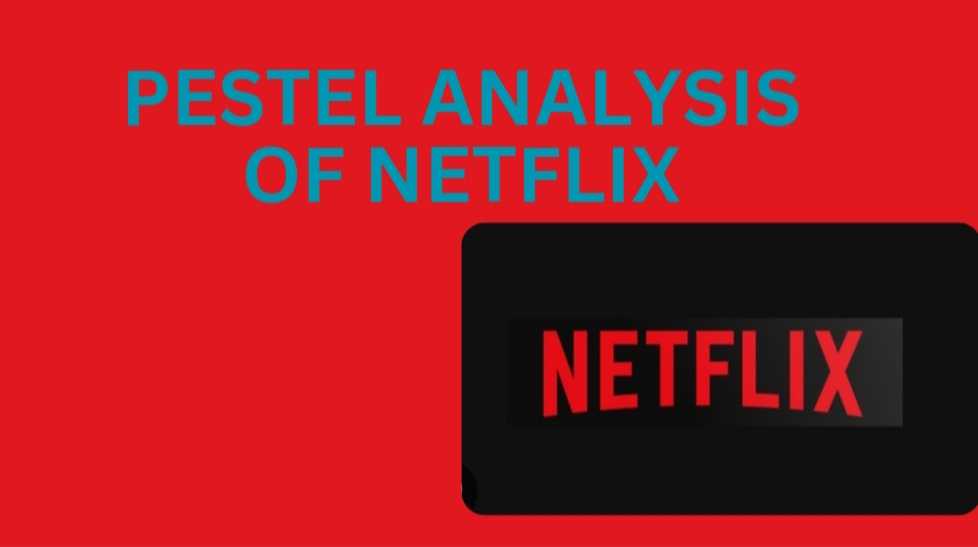Netflix, as a global entertainment giant, operates in a dynamic and ever-evolving industry, shaped by various external factors. A comprehensive understanding of its external environment is vital for strategic decision-making. Hence, employing a PESTEL analysis allows us to delve into the Political, Economic, Social, Technological, Environmental, and Legal factors that influence Netflix’s operations. By examining these dimensions, we can gain insights into how Netflix navigates through challenges and leverages opportunities in the competitive streaming landscape.
Table of Contents
TogglePolitical Factors of Netflix
Political factors affecting Netflix encompass regulations, censorship, and government policies related to the media and entertainment industry. As Netflix operates globally, it must navigate diverse political landscapes across different countries. Government regulations regarding content licensing, censorship, and taxation can significantly impact its operations and expansion strategies. Additionally, geopolitical tensions, trade policies, and changes in government leadership can create uncertainties that affect Netflix’s international ventures and market penetration efforts. Moreover, issues such as net neutrality and data privacy regulations may also have implications for Netflix’s business model and user experience. Overall, political factors play a crucial role in shaping the operating environment for Netflix and influencing its strategic decisions.
Economic Factors of Netflix
Economic factors affecting Netflix include macroeconomic conditions, consumer spending trends, and currency exchange rates. The state of the global economy can influence consumer disposable income and their willingness to spend on streaming services like Netflix. Economic downturns may lead to cost-conscious behavior among consumers, impacting Netflix’s subscriber growth and retention rates. Moreover, fluctuations in currency exchange rates can affect Netflix’s revenue and profitability, particularly in international markets where it operates. Additionally, competition from other entertainment options, such as traditional cable TV or other streaming platforms, can intensify during economic downturns as consumers reassess their entertainment budgets. Thus, understanding economic factors is essential for Netflix to adapt its pricing strategies, content investments, and expansion plans to remain competitive in varying economic environments.
Social Factors of Netflix
Social factors influencing Netflix include demographic trends, cultural preferences, and shifting consumer behaviors. Demographic changes, such as the rise of younger generations like Millennials and Generation Z, who are digital natives and more inclined towards streaming services, have contributed to Netflix’s growth. Moreover, changing lifestyles, including busier schedules and increased mobile usage, have driven the demand for on-demand entertainment options like Netflix. Cultural preferences also play a significant role, as Netflix invests in creating diverse content to cater to a global audience with varying tastes and interests. Additionally, social trends such as the increasing importance of social media influence on content discovery and recommendation can impact Netflix’s marketing strategies and user engagement. Furthermore, societal attitudes towards topics like diversity, inclusion, and sustainability can influence Netflix’s content creation decisions and brand perception. Overall, understanding these social factors is crucial for Netflix to stay relevant and resonate with its diverse audience base.
Technology Factors of Netflix
Technology factors play a pivotal role in shaping Netflix’s operations and growth trajectory. At the core of its business model lies streaming technology, which enables the seamless delivery of high-quality video content to subscribers across a multitude of devices, ranging from smart TVs to smartphones. To maintain this seamless streaming experience, Netflix continuously invests in robust streaming infrastructure, content delivery networks (CDNs), and video compression technologies. Furthermore, the company harnesses the power of data analytics and personalization algorithms to analyze user behavior, preferences, and viewing patterns. By leveraging these insights, Netflix can tailor content recommendations, optimize its content library, and refine its marketing strategies, thereby enhancing user satisfaction and retention.
Moreover, Netflix remains at the forefront of content production and innovation, investing heavily in original content creation to differentiate itself in the highly competitive streaming landscape. Through the utilization of cutting-edge technologies such as virtual reality (VR), augmented reality (AR), and interactive storytelling, Netflix aims to create immersive and engaging viewing experiences for its audience, further solidifying its position as a leader in the industry. Additionally, with the increasing prevalence of mobile and connected devices, Netflix continues to prioritize the optimization of its streaming platform for mobile consumption. This includes the development of user-friendly mobile apps, implementation of offline viewing capabilities, and adaptation of content formats for smaller screens, catering to the evolving preferences of its mobile-centric user base.
However, alongside technological advancements come cybersecurity challenges, particularly in the realm of digital rights management (DRM) and content protection. As a digital content provider, Netflix faces threats such as piracy, unauthorized access, and content theft. To mitigate these risks, the company implements robust DRM solutions, encryption techniques, and cybersecurity measures to safeguard its content assets and protect user data privacy. Overall, technology remains a cornerstone of Netflix’s success, enabling the company to innovate, adapt, and thrive in an ever-evolving digital landscape.
Envirnomental Factors of Netflix
Environmental factors affecting Netflix are primarily related to its carbon footprint and sustainability efforts. While Netflix’s operations are primarily digital and do not involve physical products, the company still has an environmental impact through its data centers and energy consumption.
One key environmental concern for Netflix is the energy usage of its data centers, which are essential for streaming content to millions of users worldwide. The energy required to power and cool these data centers contributes to carbon emissions and environmental degradation. Therefore, optimizing energy efficiency and transitioning to renewable energy sources are crucial for reducing Netflix’s carbon footprint and mitigating its environmental impact.
Additionally, Netflix has started to focus on sustainability initiatives and carbon neutrality goals. This includes efforts to increase energy efficiency in its data centers, invest in renewable energy projects, and offset carbon emissions through carbon offset programs. By implementing these measures, Netflix aims to minimize its environmental footprint and demonstrate its commitment to environmental stewardship.
Furthermore, as a global company with a vast network of suppliers and partners, Netflix has an opportunity to influence sustainability practices throughout its supply chain. Encouraging suppliers to adopt environmentally friendly practices, reduce waste, and minimize their carbon emissions can further enhance Netflix’s overall environmental performance and contribute to a more sustainable future.
In conclusion, environmental factors are increasingly important for Netflix as the company strives to reduce its environmental impact, promote sustainability, and align with global efforts to combat climate change. By prioritizing energy efficiency, renewable energy adoption, and supply chain sustainability, Netflix can become a more environmentally responsible organization while continuing to deliver high-quality entertainment to its subscribers.
Legal Factors of Netflix
Legal factors significantly impact Netflix’s operations, encompassing various aspects such as intellectual property rights, content licensing agreements, and regulatory compliance. As a global streaming service provider, Netflix must navigate a complex web of legal regulations and obligations across different jurisdictions.
One of the primary legal considerations for Netflix is intellectual property rights, including copyrights, trademarks, and patents. Securing licenses for streaming content and original productions while respecting the intellectual property of content creators and studios is essential to avoid legal disputes and infringement claims. Additionally, Netflix must adhere to copyright laws and regulations governing the distribution of licensed content to ensure compliance and protect its reputation.
Content licensing agreements form the backbone of Netflix’s business model, allowing it to acquire and distribute a vast library of movies, TV shows, and original content. Negotiating and renewing these agreements while navigating contractual terms, exclusivity clauses, and territorial restrictions require careful legal scrutiny and strategic planning to optimize content offerings and maintain competitive advantage.
Furthermore, regulatory compliance is a critical legal factor for Netflix, particularly in areas such as data privacy, consumer protection, and competition law. As data privacy regulations evolve worldwide, Netflix must ensure compliance with laws like the General Data Protection Regulation (GDPR) in Europe and the California Consumer Privacy Act (CCPA) in the United States. Additionally, adhering to consumer protection laws and advertising standards is vital to uphold transparency and trust with subscribers.
Moreover, antitrust regulations and competition law scrutiny can impact Netflix’s market dominance and business practices. Ensuring compliance with antitrust laws and regulations while navigating competitive dynamics and market entry barriers is crucial for sustaining growth and avoiding regulatory scrutiny.
Overall, legal factors pose both opportunities and challenges for Netflix, shaping its strategic decisions, content acquisition strategies, and regulatory compliance efforts. By proactively addressing legal considerations and staying abreast of regulatory developments, Netflix can mitigate risks, foster innovation, and maintain its position as a leading global entertainment platform.






